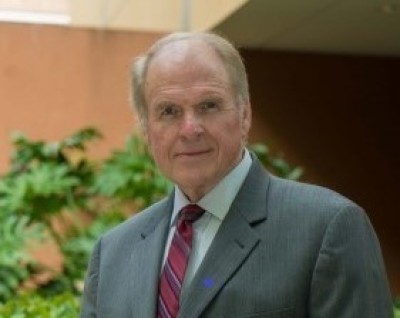Reset to radical church: Reach back to the past for future sake (pt 3)

Churches everywhere have a great opportunity now midst pandemic and political and economic uncertainty to undertake what the secular world calls a “reset.” “Renewal” is the term that has long been used in church life.
It is a kairos, an “opportune” moment.
The renewal must be “radical” — reaching all the way to the “roots” of the New Testament church. It is not enough to renew merely the institutional aspects of churches, but their very identity and heavenly commissioned function.
Churches in the present must reach back to the past for the sake of the future.
First, this necessitates an intense ontological analysis. Churches must ask the ontological questionbefore the functional. Who are we? must come before What are we to do?
To understand who the church is requires a penetrating study of the Scriptures that reveal the essential Being of the Lord Jesus Christ.
I Am that I Am is the most powerful ontological statement in the Bible. (Exodus 3:14) It was God’s response when Moses encountered Him in the burning bush and received the Lord’s commission to deliver Israel from Egypt. Moses gets the sequence right: before he asks the How? or What? questions, he asks the Who? question because that is the Authority, Person and Name by and through which Moses must stand before Pharaoh.
What does this mean for a church? Jesus answers it when He tells Phillip: “Anyone who has seen Me has seen the Father!” (John 14:9 NLT) Here the ontological and functional concerns are wrapped into one: The general function of a church is to manifest in its world the Being and nature of the Father as revealed in Jesus Christ.
Before a church can move on into a strategic institutional analysis — the quantitative — it must deal with the qualitative. Are people within its locus seeing God through its presence? This may lead a church to repentance for primarily being known in its community as a religious corporation rather than showing the people around it something of the character of God.
Repentance can lead to revival that ignites renewal.
A second great ontological statement is from the mouth of Jesus: “I AM THE LIFE.” (John 14:6) This prompts more needed soul-searching for a church seeking renewal, especially when coupled with the rest of Jesus’ statement in John 14:6: “No one comes to the Father but by Me.” That is, through Jesus Christ there is a special quality of life that transcends mere existence in time and space.
Its immanent characteristics are revealed in the fruit of the Holy Spirit: love, joy, peace, patience, kindness, goodness, faithfulness, gentleness, self-control. (Galatians 5:22-23)
Churches seeking renewal must consider how they have manifested that beautiful life midst their neighborhoods, towns, cities, and nations. Such churches must assess their evangelistic effectiveness in leading unreached people to embrace that Life. Churches seeking renewal must also evaluate how successful they have been in developing disciples who manifest that life to others.
The Apostle Paul makes a powerful statement that bridges the ontological and the functional when he says in Philippians 1:21, “For to me, to live is Christ...”
Living as Christ within the world means doing what He did in His incarnate ministry. The transcendent incarnate Being is present on the immanent plane to bring transcendent reality to the human scale.
Nothing less than that is the vision and mission of churches that in fellowship with one another constitute the global body of Christ.
We said earlier that there are at least five categories of incarnational ministry that define Jesus’ work in the world:
- Worship
God “is enthroned upon the praises of Israel,” says Psalm 22:3. That is, God is made manifest to His people and their world in their worship. Professor Peter Rhea Jones says the idea of “drawing near to God” ... is “at the heart” of the concept of worship. Thus, the worshipping church experiences the manifest presence of God and brings it into the world.
- Intercession
The real church has the “keys,” the authority of God’s Kingdom that allows it to come to His very throne with “boldness.” (Hebrews 4:16) The Revelation vision presents the powerful imagery of the prayers of God’s people being collected at His throne, from whence they are poured upon the world in the kairos within the plan of God. (Revelation 5:6-10; Revelation 8:1-5)
- Proclamation
Jesus preached the “gospel of the Kingdom” and said that it would be proclaimed (declared) in all the world before His second coming. This is the announcement of the lordship of Christ over time and history. Such preaching would mark a radical change in pulpits that easily deteriorate into self-help chat boxes, or center on getting ready to leave this world and go to Heaven. The “gospel of the kingdom” encompasses that but also focuses on living out the Gospel here and now in the immanent world.
- Disciple Development
Many evangelical churches focus on conversion, believing they are being true to the Great Commission. That is certainly priority in Jesus’ commission to His church, but His primary assignment is for churches to “make disciples.” (Matthew 28:18-20)
- Servanthood in the Father’s name
Being a servant body in the world in the name of Christ, through the empowering of the Holy Spirit, and the glorifying of the Father is of such importance that it constitutes a factor in judgment. (Matthew 25)
The bottom line is this: If the church is the body of Christ it ought to do what Jesus did in His incarnate body — worship, intercede, proclaim, make disciples, and serve human need in Christ’s name.
That is the “reset/renewal” for churches that must happen in this definitive moment.
Wallace Henley is a former pastor, White House and congressional aide, and author of more than 25 books. His newest is Two Men From Babylon: Nebuchadnezzar, Trump, and the Lord of History, published by Thomas Nelson.





























